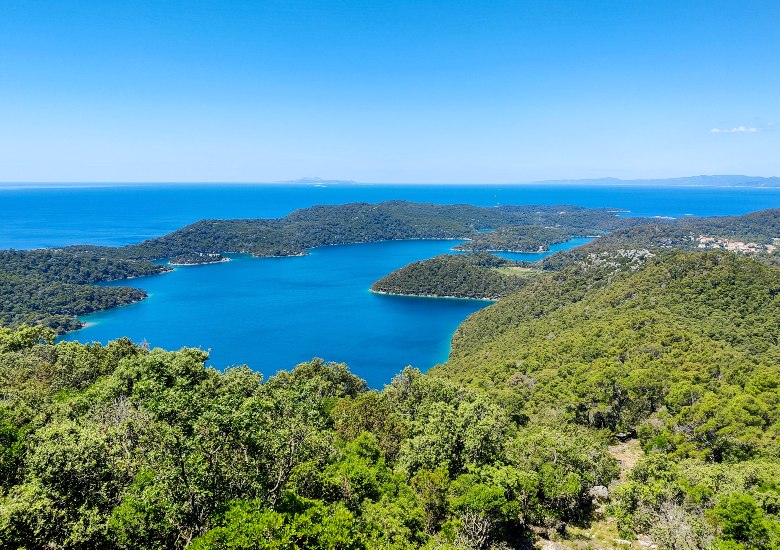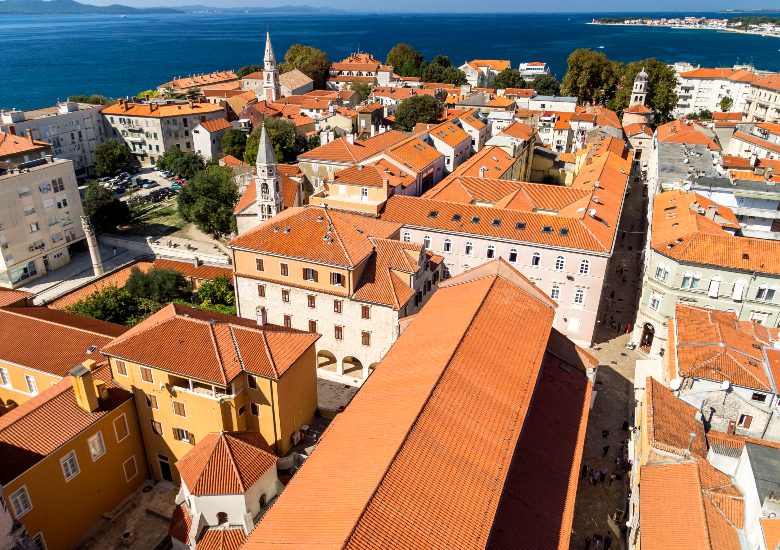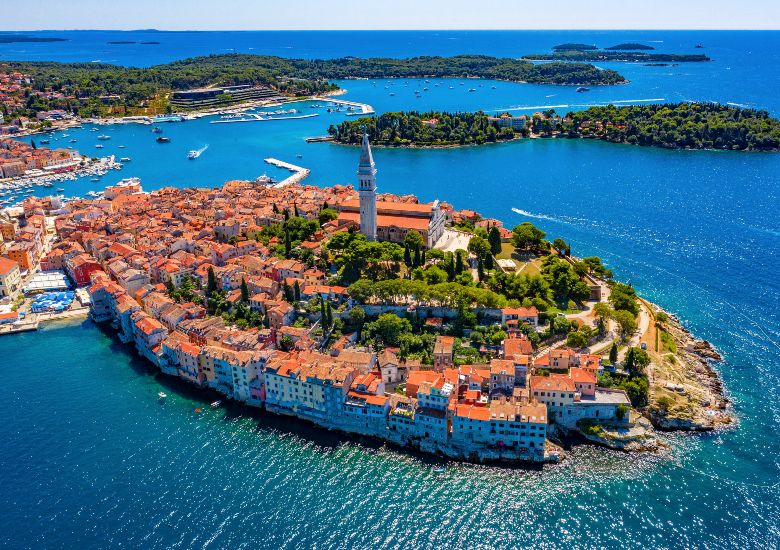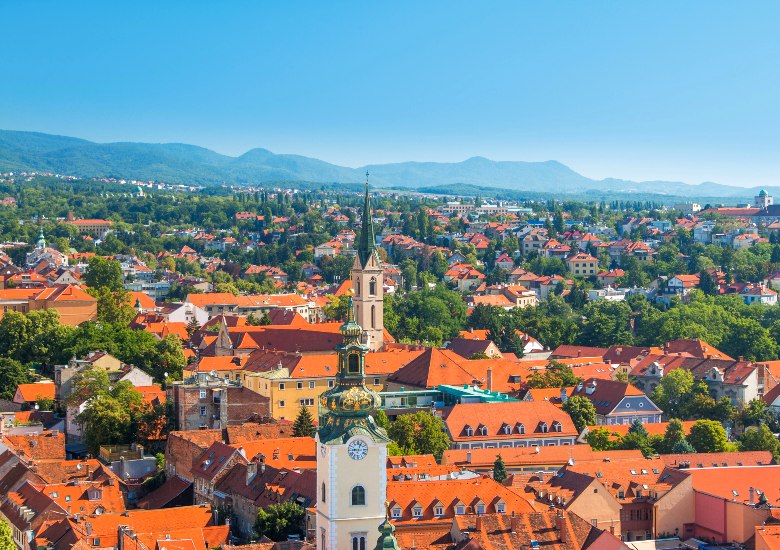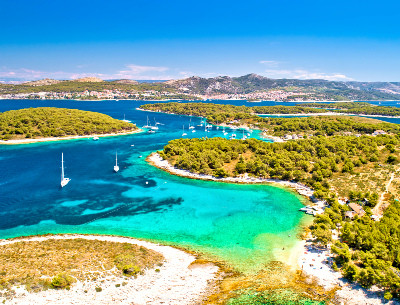Best Places to Visit in Croatia for 2024
One of the world’s most sought-after destinations, Croatia caught the eye of many when it was featured in the hit series “Game of Thrones” but it’s long been an enchanting country to visit. Hollywood legends Richard Burton and Elizabeth Taylor enjoyed romantic liaisons here in the 1970s, and some four decades before, King Edward VIII and Wallis Simpson also enjoyed a love affair here. With everything from cascading waterfalls, picturesque beaches and medieval walled towns to mouthwatering cuisine and fine Dalmatian wine, narrowing down where to go isn’t easy, but this list will help you discover the very best places to visit in Croatia.
Known as the ‘Pearl of the Adriatic,’ Dubrovnik is a must-visit on your Croatia vacation. Game of Thrones fans will recognize it as the fictional town of Kings Landing. Fan or not, it’s a joy to explore with the magnificent pedestrianized Old Town and its limestone-paved streets lined with centuries-old palaces and cathedrals. It’s all encircled by huge medieval stone walls stretching 1.2 miles with imposing gates, bastions, towers, and forts. Be sure to take a stroll atop the walls for views of the red-tiled rooftops on one side, the endless blue of the Adriatic Sea, and nearby islands on the other. Enjoy a bird’s-eye view over it all by riding the cable car to the summit of Mount Srd.
Split is abundant in history, home to some of the world’s most beautifully preserved Roman architecture. That includes Saint Domnius Cathedral, the oldest Catholic cathedral on the planet, consecrated at the turn of the 7th century AD. Today, many of the ancient buildings now house unique shops, galleries, cafes, wine bars, and restaurants. But there’s plenty more to see and do here, from the Green Market adjacent to the palace where you can shop for local products with the locals to beaches with opportunities for water sports. The city is also a popular departure point for island-hopping cruises and boat tours.
Hvar is a sun-soaked island that’s a favorite among international jet setters. It’s one of the best places to visit in Croatia if you’re looking for a party in the summer, with world-class restaurants and buzzing nightlife drawing many rich and famous, but visitors of all types will find something to love. The landscapes are breathtaking, with beautiful beaches edging clear aquamarine water for swimming, while inland areas feature lavender-, olive tree-, and vineyard-covered hills. There are numerous historic sites too, including the early 17th century Cathedral of St. Stephen and the oldest community theater in Europe which opened its doors in 1612. From the medieval hilltop fortress, soak up a panoramic view of the town, harbor, and nearby islands.
Korcula may be a small island but it packs a punch with natural beauty that includes dense forest and sandy beaches. The alleged birthplace of famous international explorer Marco Polo you can learn more about its past with a visit to Old Town Korcula. Sometimes referred to as a “mini-Dubrovnik” it’s surrounded by 13th-century stone walls with gates and towers while the labyrinth of atmospheric streets and narrow alleyways reveal significant Venetian influence. Notice the winged lions on St. Mark’s Cathedral, built over the 15th and 16th centuries in Gothic-Renaissance style by Italian and local artisans. You’ll find many little independently owned shops, galleries, and outstanding eateries serving traditional fare, while Moreska sword dance performances take place in the summer.
Mljet Island is one of the best places to visit in Croatia for nature lovers with over 84 percent forested. Mljet National Park is one of the top attractions, home to two famous saltwater lakes, Veliko (Great) and Malo (Small). Both feature dazzling water in brilliant hues of blue and green. In the middle of Veliko, tiny St. Mary islet hosts a 12th-century Benedictine abbey which now serves as a café and gift shop. It’s connected via boat, with multiple trips leaving from both sides of the lake. There are scenic trails for hiking and biking with bike rentals available for exploring on two wheels. Or, rent a kayak and paddle around the lakes, joined by a narrow channel.
Vis is the furthest permanently inhabited island from the mainland. Its remote location and the fact that it’s been largely undeveloped by tourism after being closed to the public for 40 years while used as a military base, makes it one of the most unspoiled islands to enjoy during your Croatia vacation. Enjoy the relaxed atmosphere, ideal for a digital detox, while enjoying everything from stunning beaches like Stiniva, set in a secluded cove framed by high cliffs, to a fascinating history. There are Roman ruins and war relics while Vis Town boasts an intriguing archaeological museum. Don’t miss Fort George which offers a restaurant and a sunset bar for panoramic views of the Adriatic, particularly ideal for sundowner cocktails.
Krka is a national park that protects diverse flora and fauna, including nearly 900 species and subspecies of plants with several endemic types, and more than 220 species of birds. However, its waterfalls are what most visitors come for. As you stroll the scenic pathways and wooden bridges you’ll be able to soak up the natural beauty that includes seven travertine falls like Skradinski buk, the highest in the Mediterranean. Located in the southern part of the park, it’s framed by traditional watermills, plunging for more than 150 feet, as one of Europe’s most stunning carbonate cascades. In the north, you’ll find another striking waterfall accessed via nature trail, Roski Slap, along with Krka Monastery which sits above ancient Roman catacombs.
Located at the southern tip of the Istrian Peninsula, Pula is a pretty seaside city that provides a great base for exploring the region and its enchanting hilltop villages. It also offers plenty of its own, including an impeccably preserved Roman amphitheater. Dating back to the 1st century AD, it’s the only one with all four side towers and three Roman architectural orders that remain. One of the top sights in all of Croatia, it’s ranked among the world’s largest surviving Roman arenas. In ancient times, it was the place to go to watch gladiator flights. The city’s bustling piazza is a great place for people-watching while enjoying a drink or a bite to eat at one of the many cafes.
Established over a thousand years ago, the ancient city of Sibenik was once a wealthy mercantile hub as the heart of the Adriatic’s salt trade. Today, visitors enjoy a glimpse of a time long past, complete with historic forts, city walls, and one of the largest and most important Gothic-Renaissance cathedrals. St. James Cathedral was built entirely of stone quarried from the islands of Brac, Rab, Krk, and Korcula over the 15th and early 16th centuries. One of the standout features is the frieze, decorated with over 70 sculpted faces of men, women, and children. If it looks familiar it might be because it served as the House of Black and White, Arya’s home in season 5 of “Game of Thrones.”
Zadar boasts an over 3,000-year history and is almost entirely surrounded by the Adriatic Sea, located along the Dalmatian Coast an hour northwest of Sibenik. Its intriguing mix of modern and historic includes one of the best-preserved pre-Romanesque buildings, St. Donat’s Church, completed in the 9th century. There’s also a 1st-century BC Roman forum and you can gaze up at 16th-century defensive walls. Learn more about its history in the Archaeological Museum with artifacts dating to the prehistoric era through the 15th century. The waterfront promenade on the modern side features a pair of unique art installations, the Sea Organ which makes music with the waves, and the Greeting to the Sun which plays a light show after dark.
Located on the west coast of the Istrian Peninsula, romantic Rovinj is tucked into the hills while rising dramatically above the Adriatic. It’s one of the best places to visit in Croatia if you’re looking for Venetian influence as the country’s most Italian town. Stroll the cobbled streets in the historic center toward the highest point of the city, marked by the baroque St. Euphemia Church and its bell tower. The nearly 200-foot-high tower resembles that of St. Mark’s Basilica in Venice and is topped by a statue of Saint Euphemia. You can climb the old wood steps of the tower for a jaw-dropping view. Throughout the town, there are countless photo ops from vibrantly hued facades to characterful, crumbling homes.
Zagreb is Croatia’s capital and largest city, located in the north of the country. It boasts a rich history dating back over 3,000 years with the Upper Town at its heart home to one of the oldest buildings, 13th-century St. Mark’s Church, known for its colorfully tiled roof. The Gothic, twin-spired Zagreb Cathedral, considered the most monumental gothic-style building southeast of the Alps can be found here too. It’s also the tallest in Croatia with its twin spires towering more than 350 feet. Nearby is pedestrianized Tkalciceva Street, lined with many outdoor cafes. The modern Lower Town, linked by the world’s shortest funicular at 216 feet, is where you’ll find the main square along with shops, museums, and parks.













